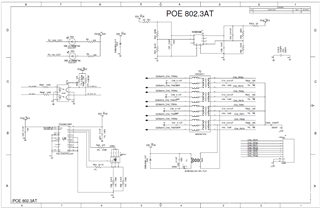Hi,
We are using TPS23861PWR as POE PSE controller in one of our projects,
Issue:
Design :

We are facing chip failures and physical damage
We found Wrong Power ON Sequence in our design with respect to datasheet,
As per datasheet , " The voltage on the RESET pin (VRESET ) should be kept below 0.9 V until VVPWR exceeds VUVLOPW_R. If VDD is turned ON after VVPWR exceeds VUVLOPW_R then no delay for RESET is required. If VDD is ON before VVPWR exceeds VUVLOPW_R then a delay for RESET is required. This delay can be provided by the system host or with a capacitor (CRST) connected to the RESET pin using the internal (50 kΩ typical) or external pullup resistor"
captured data:
Yellow : VPWR: 52VDC
Blue : VDD: 3.3VDC

There is violation in power sequencing?
Quires :
- What will happened 3.3V is comes before 52V?
- is This wrong power sequence will damage the chip?
Thanks
Srini

